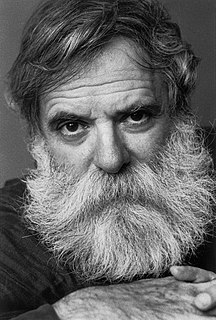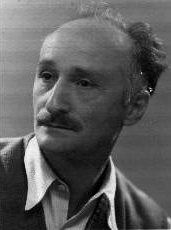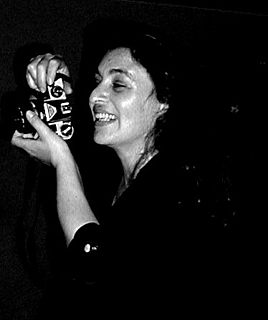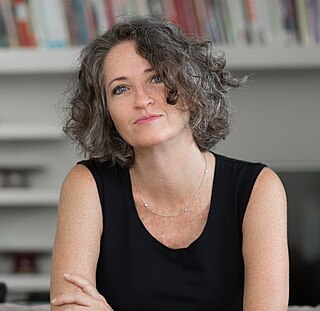Simcha Shirman | |
|---|---|
 Simha Shirman in his Studio in Tel Aviv | |
| Born | 1947 |
| Nationality | Israeli |
| Known for | Photography |
Simcha Shirman (Born 1947) is a German-born Israeli photographer and educator. [1]
Simcha Shirman | |
|---|---|
 Simha Shirman in his Studio in Tel Aviv | |
| Born | 1947 |
| Nationality | Israeli |
| Known for | Photography |
Simcha Shirman (Born 1947) is a German-born Israeli photographer and educator. [1]
Simcha Shearman was born in 1947 to Batya and David, both Holocoust survivors. He was born in Saint Ottilien Convent, which was converted by USA occupation authorities to a soldier and refugee hospital after WWII. His birth certificate states that he is a displaced person. The small family immigrated to Israel in May 1948 and settled in the city of Acre. Shirman got the first camera when he was 12 - a relative from America who visited Israel gave it to him and at the age of 15 purchased and set up a photo lab in the bathroom of the small house in Acre's neighborhoods. Shirman did his military service in 1965 in the Shaked patrol unit, as an officer and commander in the patrol. [2] In 1970, Shirman decided to go to New York to study photography. In 1972, Shirman began his undergraduate studies at the School of Visual Arts, and in 1976 continued his graduate studies at the Pratt Institute, where he studied with Arthur Fried and where he met and befriended Philip Perkis. Upon graduation in 1978 and receiving the M.F.A. in photography and art, Shirman returned to Israel with his family to the city of Tel Aviv.
From the beginning of his career, in the tradition of American photography and European photography, Shirman has been involved in his photographs with personal and collective biographical subjects related to the existence of Israeli land, history, memory, the Holocaust, family, Israeli army, portraits, changing landscapes and sea. Through these topics, Shirman discusses complex questions related to the place and existence. Shirman's life, his family, immediate and distant environment, the landscapes in which he lives and revolves, his childhood experiences and subconscious memories, questions of sexuality, existence, identity and life and death, are all the materials he examines and processes in his artistic work.
In dealing with the meaning and understanding of Holocaust memory and their impact on the present and future, on the existing and fictitious family albums and on the family itself, in the German, Polish and Israeli landscapes, Shirman tackles contemporary existential questions, the victim's image and the victim, the attitude toward, and the social-cultural, social- Guard towers and hunters - pastoral still life with threatening and threatening memory.
Shearman's difficult experiences as a commander in the First Lebanon War, during long reserve periods in Lebanon and in the Occupied Territories during the Intifada, he brought to his many exhibitions and also words and pictures in the then "reputation" magazine. As a resident of Ramat Aviv in its early days as housing for young couples, Shirman accompanied and documented the changing boundaries of the northern city of Tel Aviv. During his travels to Bezalel, he followed the changes in the landscape and environment in the Modi'in area, when he came to Jerusalem. Acre, his childhood town, is the subject of his work, focusing on the Old City and its alleys, horses, old and new architecture, the Muslim cemetery and the sea.
Shearman also photographed the sea in Tel Aviv with reference to the horizon line - a meeting of the sea and the sky - and the space of existence and daily and sometimes unattainable occurrences, in endless grays. [2]

Micha Bar-Am is a German-born Israeli journalistic photographer. His images cover every aspect of life in Israel in the past sixty years.
Ahlam Shibli is a Palestinian photographer from Israel. Her work explores themes of home and belonging and documents the life of Arabs in villages unrecognized by Israel in the Negev and northern Galilee regions.
Michal Heiman is a Tel Aviv-Yafo based artist, curator, theoretician and activist. She is the founder of the Photographer Unknown Archive (1984) and creator of the Michal Heiman Tests No. 1-4 (M.H.T). Her work bears on issues of history, human and women's rights, trauma, and memory, as well as an examination of the photographic medium, using reenactment, installation, archival materials, photographs, film, and lecture-performances.
Ori Gersht is an Israeli fine art photographer. He is a professor of photography at the University for the Creative Arts in Rochester, Kent, England.

Samuel Joseph Schweig, in Israel known as Shmuel Yosef Schweig was an Israeli photographer.

Visual arts in Israel refers to plastic art created in the Land of Israel/Palestine region, from the later part of the 19th century until today, or art created by Israeli artists. Visual art in Israel encompasses a wide spectrum of techniques, styles and themes reflecting a dialogue with Jewish art throughout the ages and attempts to formulate a national identity.

Ze'ev (Wilhelm) Aleksandrowicz was an Israeli photographer. He is mostly known for his work in Palestine and Japan, during the first half of the 1930s.
Oded Balilty is an Israeli documentary photographer. He is an Associated Press (AP) photographer and won the Pulitzer Prize for Breaking News Photography in 2007.

Israel Zafrir was an Israeli photographer. Zafrir is considered one of the founding fathers of modern documentary photography in Israel.

Alexander Bogen was a Polish-Israeli visual artist, a decorated leader of partisans during World War II, a key player in 20th century Yiddish culture, and one of the trailblazers for art education and Artists' associations in the emerging state of Israel.
Pavel Wolberg is a visual artist, photographer, and photojournalist. He was born in Leningrad in the Soviet Union. He lives and works in Tel-Aviv, Israel.
Boris Carmi was a Russian-born Israeli photographer. He is considered as one of the pioneers of Israeli photojournalism and documented the very beginnings of the foundation of the state of Israel. His work totals around 60,000 negatives in all.
Sharon Yaari is an Israeli photographer.

Nino (Chananya) Herman is an Israeli art-photographer.

Pesi Girsch (1954) is an Israeli photographer, born in Germany.

Gastón Zvi Ickowicz is an Israeli visual artist living and working in Tel Aviv.
Gavra Mandil was a Yugoslavian born Israeli photographer and educator, one of the first photographers of advertising and fashion in Israel, chairman of the Photographers Association, a photography teacher, founder of the Studio Gavra School of Photography.

Shimon Rudolf "Rudi" Weissenstein was an Israeli photographer. He was best known for his extensive photo documentation of the everyday life of Jewish immigrants in the 1930s. The only photographs of Israel's declaration of independence by David Ben Gurion in 1948 are by Weissenstein, who built a collection of over a million negatives.

Zoltan (Zvi) Kluger was an Israeli photographer. He is known as one of the most important photographers in Mandatory Palestine.

Naomi Leshem is an Israeli photographer. Her works are in the collections of the Israel Museum in Jerusalem, the Tel Aviv Museum of Art, the Norton Museum of Art in Florida, USA. She received the Constantiner Photography Award for an Israeli Artist from the Tel Aviv Museum of Art in 2009.